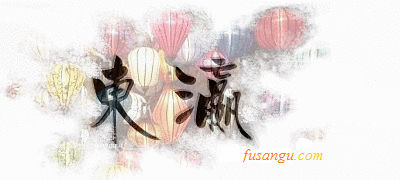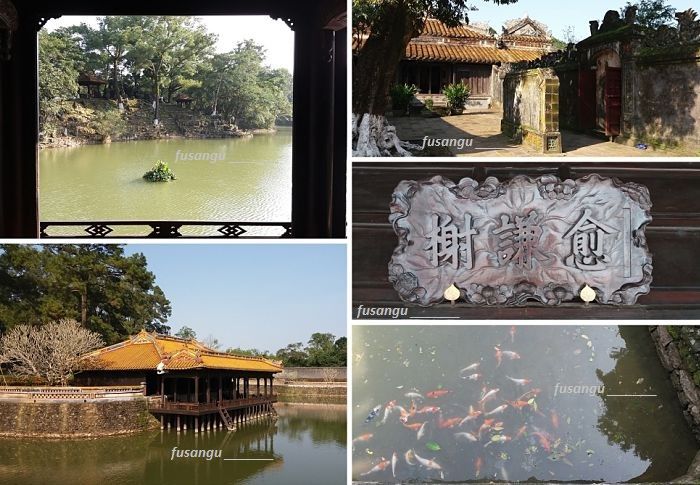
Hue is a major tourist destination, of particular importance to those who are interested in the history of the country. Hue is home to the Nguyen era Imperial Citadel, the Nguyen mausoleums and a number of important temples.
The city is surrounded by beautiful swathes of countryside, a few lagoons, hills and mountains. The scenery is so diverse and fascinating that spending some days to explore the area is definitely a sensible choice.
While most visitors are rushed through the main sightseeing spots on a one-day tour, we suggest that you devote two full days to the city, so as to allow yourself to get out of the beaten tracks and enjoy a less superficial experience.
Hue 2-day itinerary: suggested programme
A two-day itinerary can include the most important historical sites of Hue as well as minor sightseeing spots or a few destinations in the immediate vicinity of the city.
This itinerary is for those who enjoy slow travelling. There is plenty of time to observe and understand.
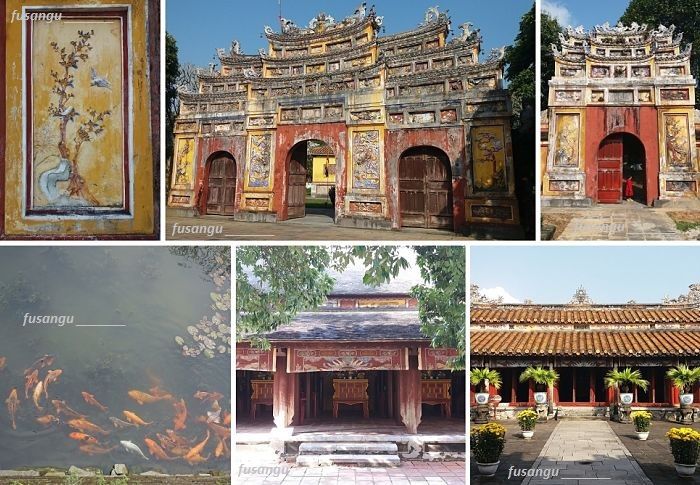
Day 1: Thien Mu Temple, Imperial Citadel and surroundings
The first day is devoted to the area around the Nguyen Imperial Citadel. Nearby are a few temples, traditional houses and other minor sightseeing spots.
Thien Mu Temple
Thien Mu Temple is one of Hue’s most ancient and beautiful temples. It lies on the northern shore of the Perfume River, in a dominant position that allows views over the vast natural landscape.
Very close to Chua Thien Mu are vestiges of the Van Mieu, a confucian temple dedicated to those who nurture knowledge and ritual site linked the Imperial Citadel.
Traditional houses
Along the road between Thien Mu Temple and the Imperial Citadel are clusters of traditional houses. These are among the few old buildings that were spared by the destructive conflict that ravaged most of the city.
Aside from their beautiful architecture and graceful gardens, the houses are noted for the application of the principles of fengshui and their atmosphere of harmony and detachment from the external world.
Imperial Citadel
Across the river from the centre of the modern city is the Imperial Citadel. Built by the first Nguyen regent it is was the seat of power of the last dynasty of Vietnam. At the time of its foundation Hue had grown into the political, cultural and religious centre of a unified Vietnam.
Oriented to face the Perfume River in accordance to precise philosophical, the complex was built to create a perfect balance with the surrounding landscape.
The structures, which comprise a great number artistic palaces, pavilions, gardens, temples, gates and enclosure walls, where aligned in a composition that reflected ancient cosmological principles. The core of the citadel are the Imperial Citadel, residence of the emperor, and the Purple Forbidden City. The fortress is protected by a system of canals connected to the river. Along with a defensive purpose they served as waterways.
The citadel suffered incommensurable damage due to neglect, inclement weather and wars. A patient work of reconstruction has saved some of the most notable buildings.
The complex is very large and in two hours and a half you should make choices in your visit. We suggest you do not miss the grandiose buildings aligned along the central axis (most notably the Hall of Supreme Harmony, Điện Thái Hòa, 太和殿) and the temples situated at the south-western corner (among which the astonishing The To Mieu.
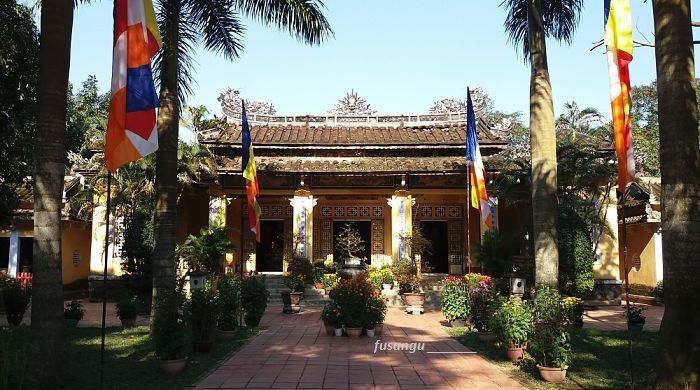
Dieu De Pagoda, Bach Dang, Dong Ba Market
Not far from the citadel there are a few sightseeing spots which are often neglected by foreign tourists. We suggest you visit the Dieu De Pagoda, a historic temple with a tranquil atmosphere situated along Duong Bach Dang, one of the few streets where your spirit can build on visual clues to recreate images of the old city. Nearby is Dong Ba Market a lively and bustling place full of stalls selling a great variety of items and local produce.
Restaurants can be find anywhere. Hue is famous for its high-quality vegetarian cuisine.
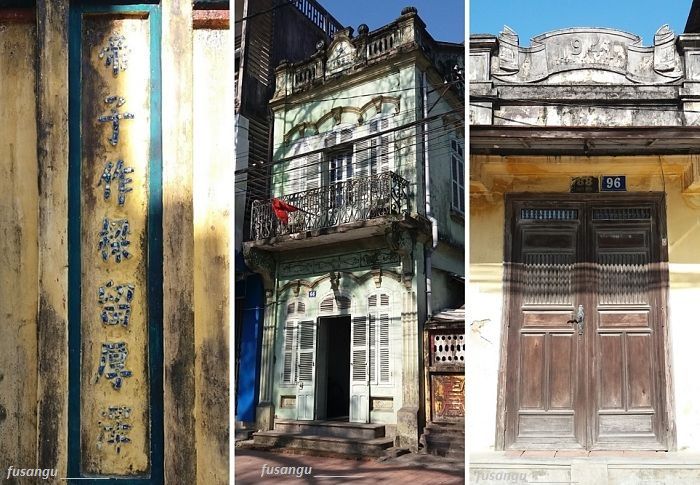
Day 2: royal mausoleums
The second day is devoted to the surroundings of Hue. We suggest you visit at least 3 tombs, notably those of Minh Mang, Thieu Tri and Tu Duc.
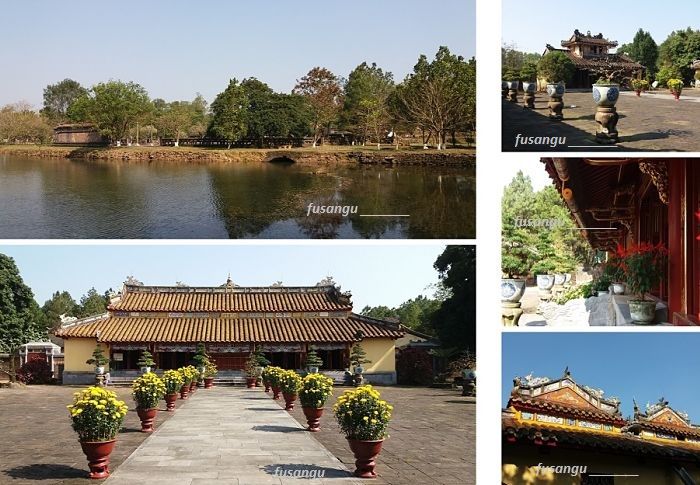
Imperial tombs
South of the citadel, immersed in a bucolic and lush landscape, are the tombs of the Nguyen Emperors.
Half day is too little time to visit all tombs. Some of them are quite far from each other and from the city centre.
We suggest you include in your journey at least two mausoleums, those of Minh Mang and Tu Duc emperors’, which are often considered the most impressive and beautiful.
Lang Minh Mang
Among Hue’s imperial mausoleums, the tomb of Emperor Minh Mang stands out for its scale and majesty. Built in accordance with tradition, the complex comprises several large building and vast gardens set in perfect harmony with the natural landscape.
The beautifully adorned main halls are aligned along a central axis, separated from each other by ponds and gardens. The visitor is made to feel the solemnity of the place by the numerous stairs along the path, which finally leads to the burial mound, surrounded and protected by a crescent-shape pond (Lake of the New Moon).
Not to be missed is also Sung An Temple, where the spirits of the imperial couple are worshipped.
As not much information is provided on site, you are encouraged to hire a local guide. The emperor was a poet and a staunch advocate of Vietnamese independence and adherence to its traditional culture.
The tomb lies around 15 km from the centre of Hue.
Lang Tu Duc
During the reign of King Tu Duc Vietnam rapidly lost its sovereignty to the French invaders. It is in this grim context that Tu Duc devoted plenty of time and efforts to have his mausoleum built.
Blending into the surrounding natural environment, his final residence looks like an ideal world. Particularly beautiful are the gardens with ponds and many small-size exquisite buildings.
Surroundings
You may then conclude your day by including an itinerary through the countryside. Along the way you can see Hoang Thanh Bridge, a characteristic wooden architecture.
Another option is to reach Thuan An, a quaint village along the coast.
Where to stay in Hue
Hue has a large offer of accommodation. Prices in Hue are comparatively lower than Hoi An and Hanoi. Indeed, Hue is the best place to focus on if you want to allow yourself some luxury without spending too much.
There are plenty of hostels, cheap inns and a few mid-range value for money hotels in the centre, near the Nguyen Cong Tru street. The context is very touristy, noisy and quite dull though.
If you look for an extraordinary context amid vast natural landscapes you can choose to base yourself outside the city centre, where you can find a number of high-level resorts.
Evening walk
Hue’s city centre was ravaged during the last war and almost nothing of the old city is left. Therefore the area is quite uninteresting and the riverside is the only place where you can have a pleasant stroll.
How to get around in Hue
To reach the main cultural and historical sights in Hue you need to hire a driver or rent a bike. Most hotels can provide for both needs. Prices are very reasonable and small groups (even 3-4 people) will find it convenient to get around by taxi.
Alternatively you can join a tour. Some include a short boat ride along the Perfume River. Accessing Thien Mu Temple from the river is very beautiful.
Getting around by bike is cheap (a day rental fee ranges between 150.000 and 250.000 dong) but definitely very dangerous, as in the rest of Vietnam. Discard the idea if you are not an experienced driver.
Related articles:
First journey to Vietnam: suggested 2-week itinerary
